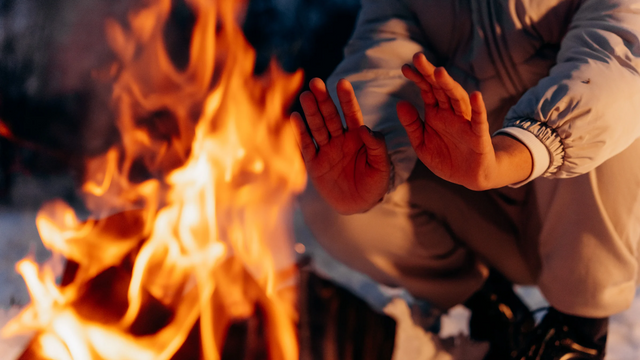
Learning is indeed a continuous process; "we learn, unlearn, and relearn!" This week I've unlearned something and relearned a new one, I meant that's the only way I can grow; before now I used to apply ointment like shea butter, honey, or egg white if I have burn, then I learned that applying soap is better then after some time I will apply gentian on the burn, well though the latter normally works well for me, today I've learned that it's not good to apply ointment on burn because it can worsen the situation. I've read and understand this week's course and I would love to attempt the questions:
" You witness a child accidentally spilling hot tea on their arm. What immediate steps will you take? What actions will you avoid? Include considerations for burn severity and explain your reasoning. " |
|---|
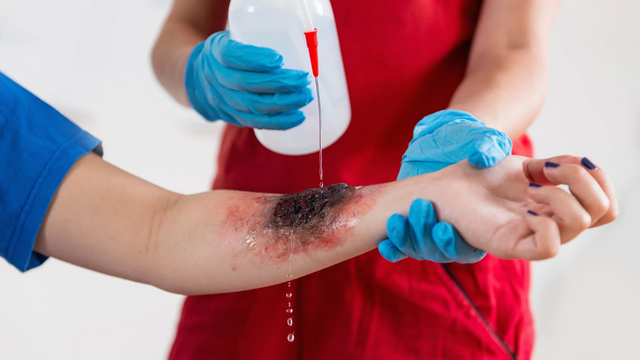
An Immediate Steps I Will Take:
1. I will make sure of our safety first by quickly moving the child away from the source of the hot tea, as this will prevent further injury.
2. I will check the severity of the burn, that is, checking the degree of the burn. If it only affects the outer layer of the child's skin, it will be red, and the child might have minor swelling. If it's a second-degree burn, then the child will have blisters, more deep redness, and pain, which affect both the outer layer of skin and the underlying layer of skin.
On the other hand, third-degree burns will make the child's skin white, leathery, or charred; this indicates that the child needs a medical emergency since the burn affects deeper tissues.
3. I will cool the burned area by running normal-temperature water for at least 10 minutes; this will reduce the pain and stop the burn from becoming worse. If there's no running tap, I will place a cool wet cloth on the burn area. In all this, I will avoid using very cold water because this can worsen the burn by causing further tissue damage.
4. If the child wears any tight dress or jewelry, I will remove them carefully only if it has not stuck to his/her skin because if it does and I pull it, then it can exacerbate the injury.
5. I will cover the burn area using either a sterile, non-adhesive bandage or clean clothing after cooling it. Materials like this will not stick to the burn.
6. I will comfort and reassure the child that he/she will be fine while I handle the situation; this will help the child not to be over-anxious.
7. I will keep my eye on the child, monitoring him for any sign of shock, checking from time to rime if his heart is beating fast, if his skin is becoming pale, if he's confused, or he's weak. If I observe any of these then I will seek medical help immediately.
8. I will seek medical attention immediately If the burn is second-degree or higher or if there are big blisters, severe pain, Or if it burns the child's face, genital, hand, feet, or major joint.
Actions I Will Avoid:
1. I will not apply cold water, or ice on the burn because it can cause frostbite and worsen the burn.
2. I will not break any blisters if they form, because this can risk infection.
3. I won't apply any home remedy, be it ointment or egg white because they can trap heat and worsen the burn.
4. I will not use tight or adhesive materials on the burn as it can stop blood flow and sticks to the wound.
5. I won't panic; I'll maintain a calm demeanor and reassure the child that he will be fine. This will prevent further distress.
6. I will make the child to drink water frequently.
Consideration For Burn Severity:
First-degree Burns: Can heal on its own within 7 days without significant medical treatment. The thing is that they can cause discomfort but the skin is not badly damaged.
Second-degree burn: May need medical intervention and evaluation, especially if it is large, this will help in preventing infection, and assessing the need to relieve pain, etc.
Third-degree Burns: Are severe and require immediate medical attention as they pose a serious threat to the child's health because the burn is deeper.
Reasoning:
How severe the burn is will significantly influence the first-aid approach giving and the need for professional medical assistance. Knowing how severe the burn is, will allow me to give proper care and interventions to minimize more damage, further pain, and infection. No matter the kind of burn, I should prioritize cooling it, managing the pain, providing comfort, and preventing further complications. Smart and right actions can lead to the desired outcomes for the injured child.
"A worker in a warehouse suffers an electrical burn after touching exposed live wires. The burn site shows entrance and exit points, with damage to the skin and underlying tissues. What are the immediate first-aid actions you should take, and what critical steps should you avoid? How does this differ from treating thermal burns?" |
|---|
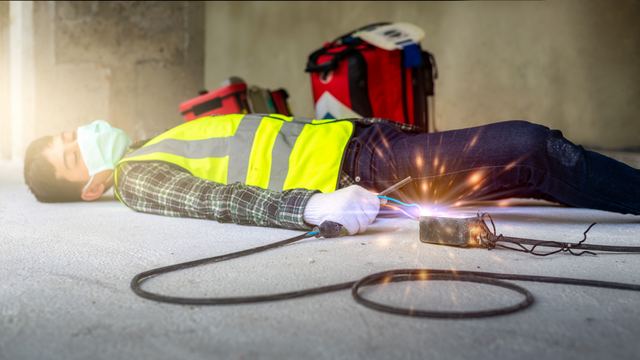
An Immediate First Aid Actions For Electrical Burns:
1. I will first of all ensure my safety by turning off the source of electricity before touching the electrocuted worker, especially if he's still in contact with the live wire.
2. I will call for emergency help immediately to get professional medical assistance.
3. I will assess the injured worker, call him to see if he's okay, and I will check his breathing and consciousness by tilting his head and chin and feeling his pulse. If the the worker is unconscious or if he's not breathing I will initiate CPR, as I learned in the previous lesson.
4. Well, in this case, the burn is severe, so after I have stabilized the injured worker, I would cool down the burn by applying running water for at least 10 minutes, not ice; this would help in reducing temperature and minimizing tissue damage.
5. I will cover the burn with a nonstick bandage or clothing on the burnt area to protect it from infection.
6. I will keep an eye on the victim and frequently check his vital signs until help arrives.
Critical Steps I Would Avoid:
1. I won't attempt to remove entrapped wires that are still in contact with an electrical source.
2. I will not apply ice or very cold water directly on the burn, because it can cause further tissue damage.
3. I will not apply any ointment, creams, or anything unless I'm being directed by a medical professional.
4. I won't give any food or drink to the victim in case he needs surgery later.
Difference From Treating Thermal Burns:
Electrical burns cause deeper tissue burns than thermal burns May appear at first. It causes internal injuries like muscle and nerve damage which might not be visible.
It's recommended to cool the burn immediately with water in case of thermal burns, but for electrical burns, we should ensure the victim is stable first before we apply water.
Electrical burns pose a greater infection risk than thermal burns, due to deeper tissue damage, so U have to be more careful in managing this burn. But I would rather seek medical Intervention immediately.
Electrical burns can cause cardiac arrest or neurological issues which require I monitor the victim closely for this specific risk. Thermal burns can lead to complications too, but they are less systemic.
Electrical burns need specific attention because they can cause serious internal injuries. That is why we should seek professional help for medical evaluation.
"A worker in a factory accidentally spills a strong acid on their arm, causing immediate pain, redness, and blistering. A colleague tries to wash it off with water but notices the burn spreading."(a) Identify the type of burn. (b) What went wrong during the initial first aid? (c) Propose the correct first aid steps and explain why each step is important |
|---|
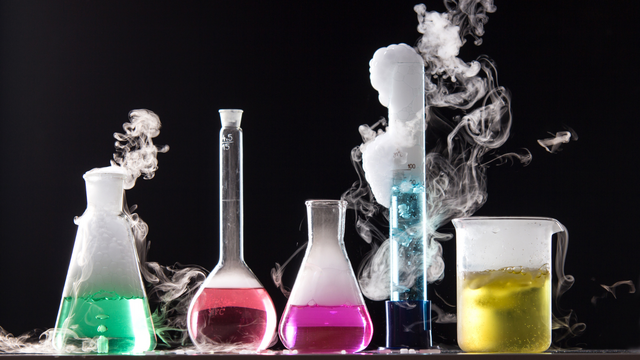
(a) Identify The Type Of Burn:
This kind of burn is known as a chemical burn; it's caused by a strong acid, and it results in redness, blisters of skin, and serious pain.
(b) What Went Wrong During The Initial First Aid?
Well, I think the response was not adequate because washing the acid with water only spread it over a larger area, and he didn't remove the victim's clothing and it could induced irritation, especially if the acid was water-reactive or it could be that the colleague couldn't wash the chemical effectively to neutralize it.
(c) Propose The Correct First Aid Steps and Explain why each Step is Important:
I will first wear hand gloves and then remove the worker-contaminated clothing and jewelry, if any; doing this will prevent further contact of the acid with the worker's skin and thus stop the burn from becoming worse.
After removing the contaminated dress, I will rinse the affected area with flowing water for at least 10-20 minutes; this will help dilute and wash away the acid from his skin, thus minimizing further damage.
- Some acid comes with a neutralizing agent, so if the one that pours the worker comes with one, for example, calcium carbonate for sulfuric acid, then I will apply it to the affected area. Note I will only take this step if it's safe and instructed for that particular chemical.
The next step I will take is to cover the burn with a sterile or non-stick bandage, this will protect the wound against infection and promote healing.
I won't fail to seek medical attention because certain chemical burns need specific treatment which only professionals can provide.
- I won't apply any ointment or ice because this can worsen the burn and damage tissue even more.
So in a nutshell, removing the contaminated dress will stop an exposure to the acid, and rinsing the area is important for removing the acid and stopping the burning process. Covering the burn area will prevent infection and help the skin to start healing. Lastly, seeking medical attention is important for evaluation and proper treatment.
You are a first responder in a rural area. Two people are injured in a house fire: Person A has a large area of third-degree burns but is conscious and calm. |
|---|
Person B has second-degree burns on both legs and is in severe pain. You can only help one person immediately due to resource constraints. Whom do you prioritize, and why? Support your decision with medical and ethical reasoning. |
|---|
As a first-aid responder, I will prioritize the patient who is in the most critical & life-threatening condition. So, after a careful consideration of the scenario, I would rather prioritize person A with third-degree burns, and below are my reason:
Medical Reasoning:
- His injury which is a (third-degree burn) is more severe and deeper than person B who suffers from a second-degree burn. His wound covers a larger area, which is life-threatening; yes, he's calm and stable because his nerves are damaged, but that doesn't mean he is ok. He might develop complications like organ failure and die; this is why his treatment is crucial.
- His airway might compromise and this is because a 3rd-degree burn can block the airway and cause the victim not to breath well. So his calm state is not showing his potential risks.
Ethical Reasoning:
- All first-aid responder have a moral obligation to respond first to the patient whose condition is critical. And in this case, person A is in more critical state.
- First Aiders are under the obligation to provide the greatest benefits.
- Lastly, delaying treatment for person A could result in harm, yes he may die, thus making me violate the principle of do not harm.
Person B's Care:
Well, while I prioritize person A I would not leave Person B entirely I can at least provide basic care to him, care like:
- Giving him pain relief drugs to subside his pain.
- I will cover his wound with a sterile dressing to prevent the wound from getting infected.
- And I will comfort him and reassure him that he'll be fine until medical assistance arrives.
In conclusion, I believe that prioritizing person A with a third-degree burn is most medically and ethically justifiable because his wound is more severe and Life-threatening.
Create an infographic on burn management. Include the following: |
|---|
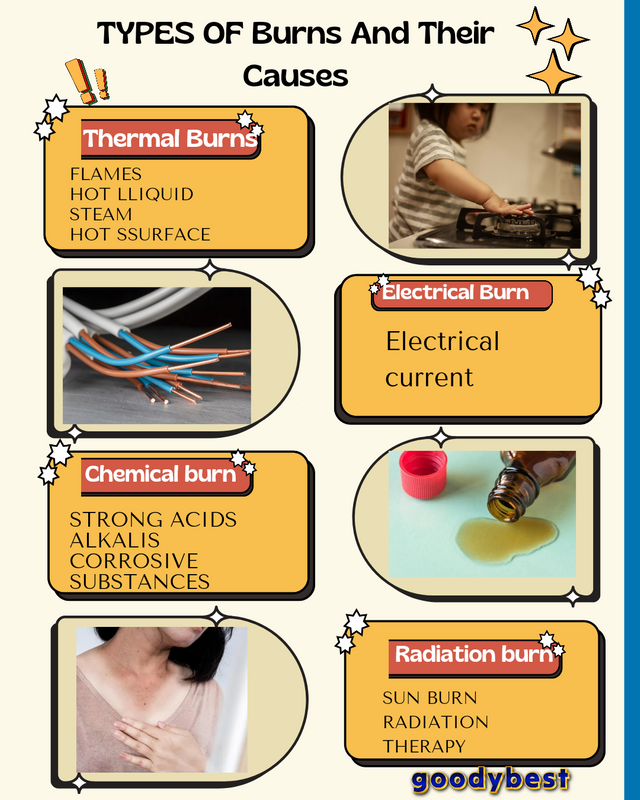
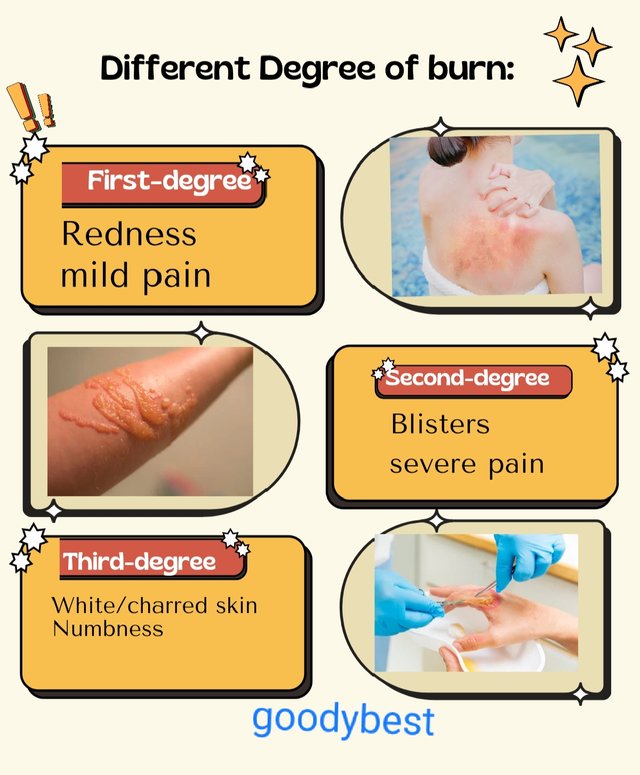
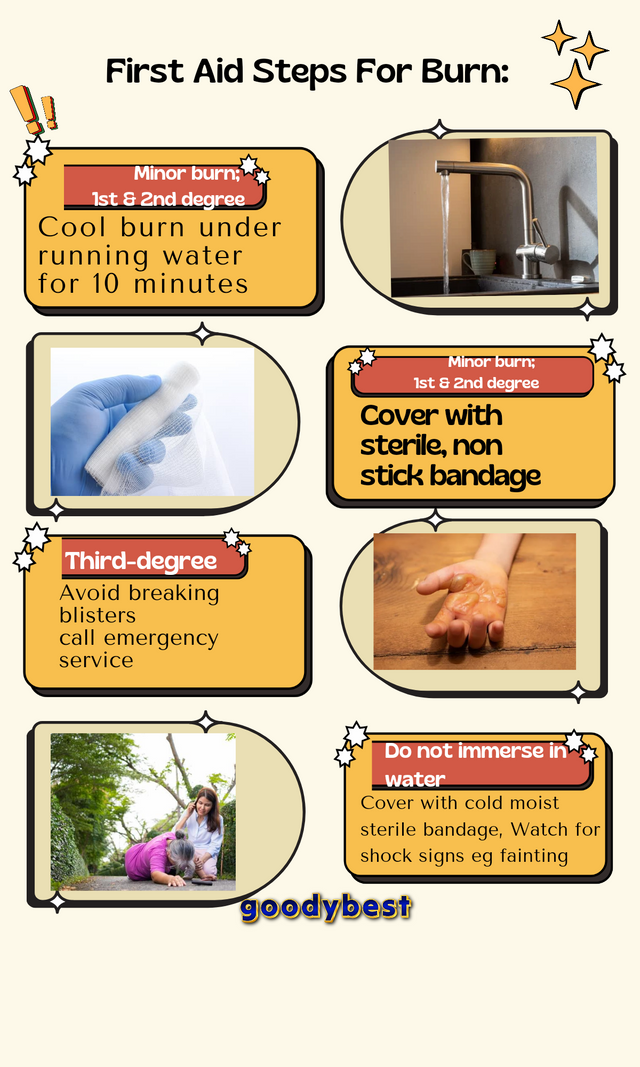
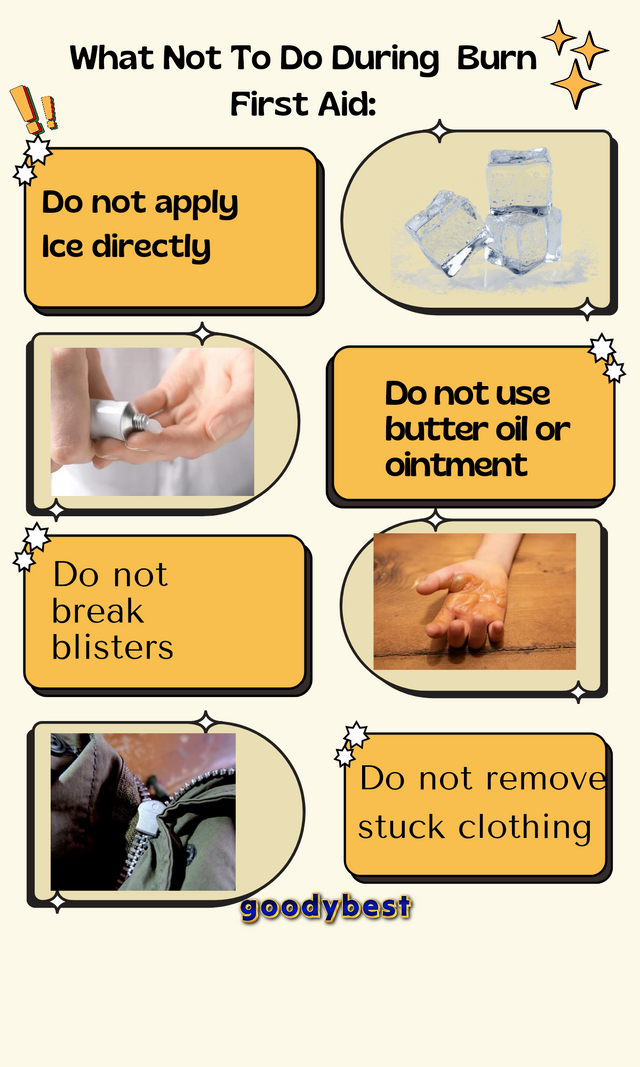
Thank you for the lesson now I know how to respond to someone who suffer from burn.
Student Name: @goodybest
Overall grade: 8.7
Plagiarism Check: Pass
AI Use: no
General Feedback: The student has shown a good understanding of this week's course. I definitely enjoyed reading your article. There were a few shortcomings which I'm sure will be avoided in the upcoming posts.
Thank you.
Regards,
@huzaifanaveed1
Downvoting a post can decrease pending rewards and make it less visible. Common reasons:
Submit
Thank you for the review, Prof. Indeed, there's always room for improvement.
Downvoting a post can decrease pending rewards and make it less visible. Common reasons:
Submit
Hi Doc, I think this has escaped your notice because I mentioned them:
Downvoting a post can decrease pending rewards and make it less visible. Common reasons:
Submit
Thanks for this lectures you have showed us so far… before now, I do rob salt on affected areas incases of first degree burn but like you explained, it’s not advisable to use home remedy.
I’m a bit confused when it comes to the acid burn. We were told not to use water because it will spread it over a larger area. Why still use water again for the next 10-20 mins for the same acid burn, after removing the clothes or jewelry from victim?
Downvoting a post can decrease pending rewards and make it less visible. Common reasons:
Submit
When dealing with acid burns, it’s important to use water to wash away the acid to prevent further damage. Additionally, you should remove any clothing that may have come into contact with the acid, as residual acid can continue to cause harm. Removing clothing helps to prevent it from sticking to the wound and causing additional injury.
Thanks for visiting me Sam!
Downvoting a post can decrease pending rewards and make it less visible. Common reasons:
Submit